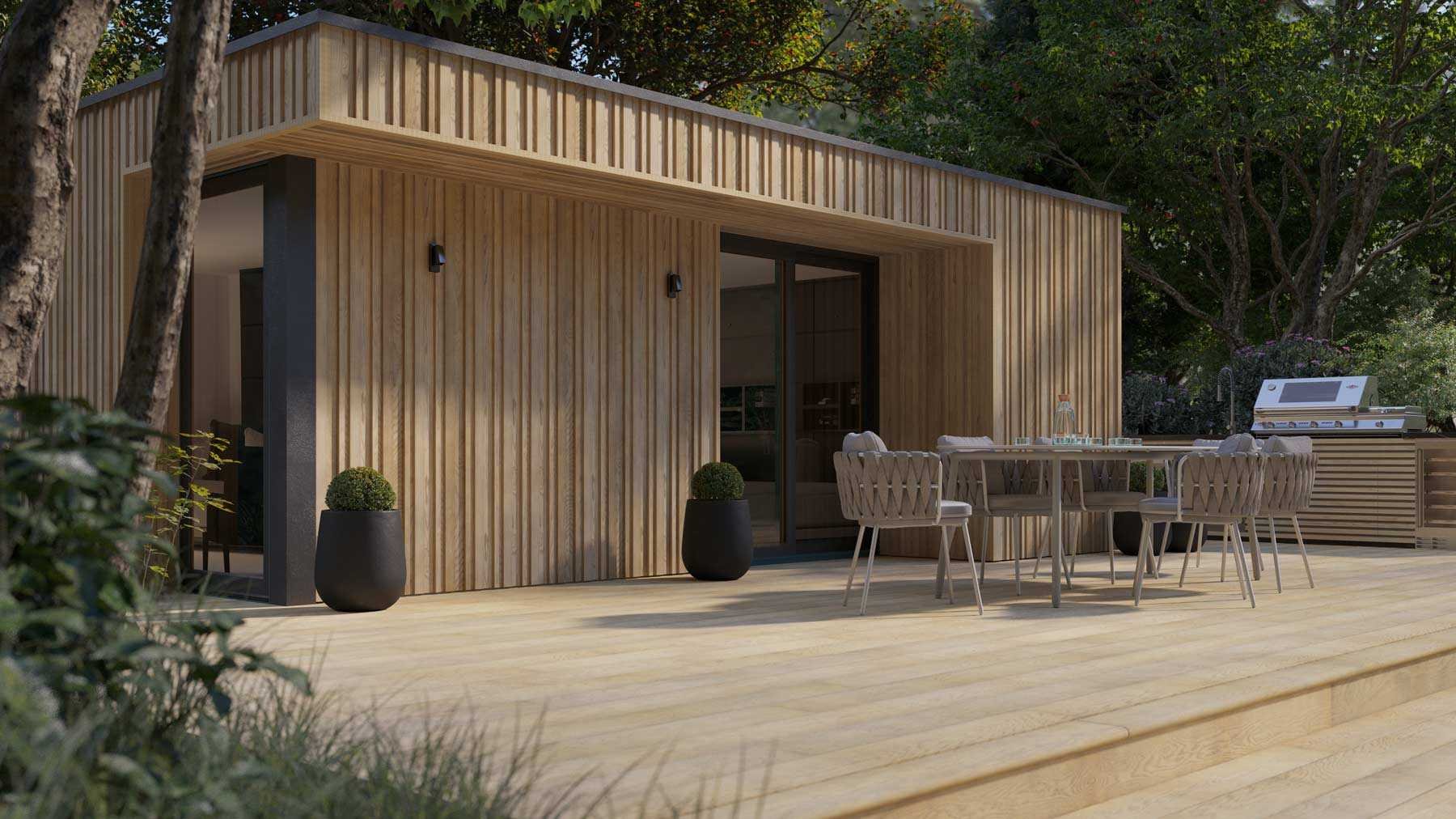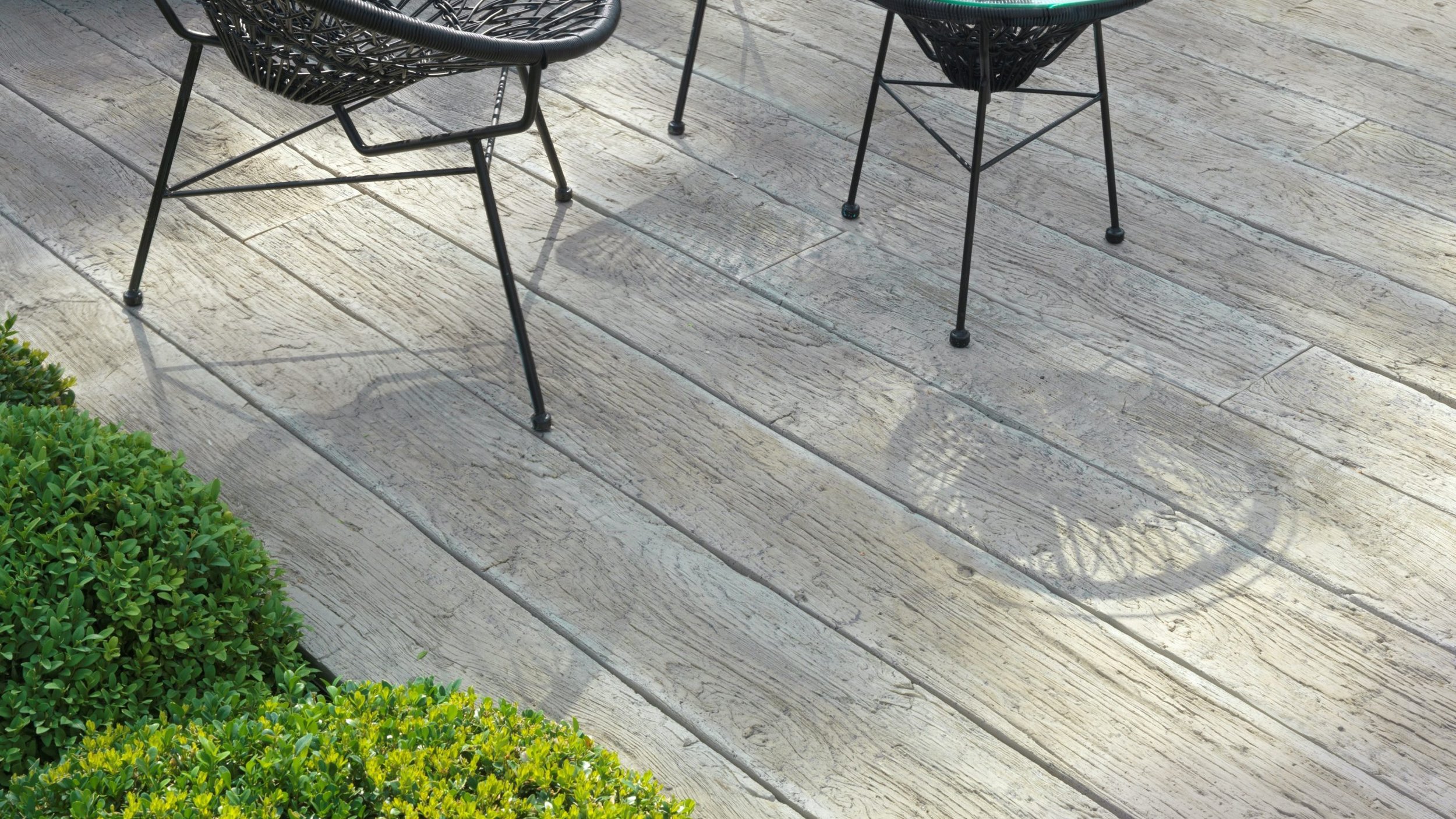Why Choose Millboard Composite Decking?
Walker Landscape and Design consider Millboard to be the best composite decking. There are so many different decking options available it can be difficult to know which type is right for you. If you aren’t familiar with composite decking or the benefits of using Millboard then read on, because in this blog we will explore why you should choose Millboard composite decking for your garden project.
Millboard Composite Cladding & Decking | Image provided by Millboard
What is composite decking?
Composite decking is a low-maintenance decking choice, usually made from a mix of plastics and wood fibres that have been heated, moulded into shape then cooled. Composite decking is a more expensive choice than traditional wood decking, but it does benefit from a significantly longer lifespan making the additional cost worthwhile.
Most manufacturers of composite decking have a choice between capped and uncapped wood composite. Uncapped composite decking is the most affordable choice as it is unsealed, however, it is prone to mould and rot due to exposed wood. Whereas capped composite decking has been sealed protecting the wood fibres from exposure and extending the lifespan of the decking when compared to uncapped composite wood. Regardless of the choice, both capped and uncapped wood composite decking is susceptible to the drawbacks of containing wood, including swelling, fading, staining and damage from moisture.
Millboard Composite Decking is unique, containing NO wood fibres which makes it a higher-performing choice. Keep reading to discover why we believe it is the best composite decking for your project.
Sunken hot tub with Millboard composite deck in Brushed Basalt Enhanced Grain from our Bowdon project
What are the benefits of composite decking?
Composite decking is an eco-friendly choice for your home as it requires a lot less timber than wooden decking – sometimes using no timber at all – and the plastics used in composite decking are often recycled.
Due to the manmade elements of composite decking, it benefits from a longer lifespan than wooden decking, especially due to its ability to withstand extreme temperatures. Composite decking is also easier to clean and maintain than wooden decking, plus the options are endless, meaning you can pick the colour and texture to suit the aesthetic of your home.
How to choose the right composite decking for you
When comparing composite decking options in the UK, it’s important to keep three key areas in mind – durability, aesthetics and sustainability. Some composite decking brands can look inauthentic, lacking a natural ‘wood effect’ that makes traditional timber so popular. Other composite decking brands contain a significant amount of real wood, making them prone to rot and mould, so choosing a brand containing little-to-no timber is a good idea for a low-maintenance approach. Finally, some composite decking brands have not put in place the necessary steps to make their products sustainable – and if you love the outdoors like we do, you’ll be wanting to choose a brand that you align with.
We believe that Millboard is the best choice when it comes to composite decking, and its huge variety of colours will perfectly complement any home. From Millboard’s sustainability measures to their aesthetic and the durability of the product itself, Millboard is the perfect choice for any outdoor living space, no matter the use or aesthetic. Keep reading to find out more about this versatile composite decking brand.
The best composite decking for your project
There are so many options out there for composite decking, but Millboard is the easy choice if you’re looking for a stylish but functional and sustainable deck. Not only does Millboard composite decking benefit from the low maintenance and longer life span discussed above, but their unique design is completely wood-free. By containing no wood, there is nothing left to be exposed to rot or deteriorate ensuring an even longer lifespan for your deck.
By hand-moulding their deck from real oak moulds, the finish and grain that Millboard are able to produce is unrivalled. They hand tint the dual-tone Lastane surface to replicate the look of natural timber even further. This Lastane layer is also scratch and stain resistant making it the perfect choice for busy households.
From a sustainability perspective, Millboard Composite Decking utilises biopolymers/natural oil polyols rather than petroleum-based materials. This makes it a fully renewable raw material base. Further, over 33% of the raw materials used in Millboard production are recycled, diverted from water streams and reprocessed, preventing waste.
Further, Millboard has two options for completely wood-free sub-frame systems. “Pras-Pro” and “DuoSpan”. Keep reading to discover the benefits of Millboard Composite Decking.
Close up of Millboard composite decking | Source: Millboard
How long does Millboard Composite Decking last?
Most composite deckings are built to last a minimum of 25 years and with the right care will last for longer. By comparison, Millboard composite decking is made from a polyurethane resin which can last up to 40 years in the right environment. This is significantly longer than the lifespan of a timber deck which is 10-15 years depending on the build quality, care and maintenance.
As Millboard decking is a solid structure instead of hollow, it is strong and durable. Millboard decking is rot-resistant, pest-resistant and will not warp over time. The innovative Lastane layer on Millboard composite deck can resist scratches and stains from everyday wear and tear.
Do I need to paint Millboard Composite Decking?
No, there is no need to paint your Millboard composite deck! There is such a fantastic range of colours available there really is no need, and the durability of Millboard ensures there is no need to repeatedly coat the decking to keep its colour. You can shop the range of Millboard boards and see the variety of colours available via our website.
The low-maintenance Lastane layer is designed to be scratch and stain resistant and as a result, will not take well to most paints or stains. However, if required there is specific touch-up paint available from Millboard to rectify any scuffs during installation or blending cut ends.
Three reasons to choose Millboard Composite Decking
No wood! This means Millboard composite decking is splinter-free, rot-resistant and non-slip, making it the perfect choice for family homes. It also ensures your decking is long-lasting, easy to clean and low maintenance.
Millboard is hand moulded. Some rival composite decking boards are created by extrusion, which means the raw materials are forced through an opening to create the end product. Millboard is hand-moulded using real timber to create a realistic visually stunning end product that mimics wood beautifully.
It’s a sustainable choice. Made in the UK, Millboard is already a sustainable choice as it does not have to travel significant distances overseas to reach our showroom, plus with such a long lifespan there will be no need to regularly replace your decking, unlike wooden decking. The Lastane layer used on Millboard decking boards is made from renewable natural oil polyols instead of petroleum-based materials. If this wasn’t enough, Millboard decking boards have recycled materials accounting for over a third of the core, and recently have become Achilles ‘Carbon Reduce’ Certified.
You can see our range of Millboard finishes and colours at our showroom in Cheshire.
Your next garden project
No matter how big or small your next garden project may be, Millboard is the ideal choice. With a vast range of colours and finishes, there is something to suit every home and outdoor space to create a contemporary and functional outdoor living space.
We are so pleased to be approved installers and stockists of Millboard composite decking and have a dedicated Millboard display area to view at our showroom. Showcasing both Millboard decking and cladding. Book a visit to the showroom or get in touch with us to discuss your next garden landscaping project.








